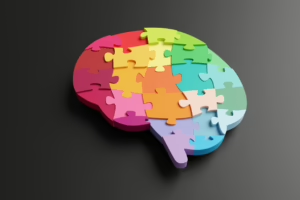In the hybrid workplace era, onboarding has become a critical — and often overlooked — driver of employee retention. Forbes reports that 30% of new employees leave within 90 days. This creates a dangerous gap between the expectations and the reality. Many employees are unhappy with their role or the organisation because it does not meet the promises made during recruitment. This mismatch can lead to early departures. I’ve seen this time and time again: companies invest heavily to attract top talent only to see them walk out of the door within the first few weeks. Why?
Many organisations are focused on getting their employees productive as soon as possible. However, they overlook the human connection which makes employees feel engaged and supported. Onboarding is reduced to a checklist and not a journey. Managers are overworked, trying to balance the need for governance and getting employees up-to-speed. Employees, who sense that there is no investment in their success over the long term, begin to search for new jobs even before probation has ended. Employees won’t tolerate poor training in today’s fast paced market. They are willing to leave the company without a new role lined up, or begin their search before their probation period ends.
Poor onboarding costs your organization a lot. It’s not just turnover. It’s also lost productivity, diminished motivation, and missed growth opportunities. It’s time to rethink the way we hire talent, not just to keep them but also to ensure sustainable business success.
The Cost of Making a Mistake:
Onboarding is costly in a world where ROI can take several months, even up to one year for SME and executive talent. It’s not just a financial loss; it also impacts the morale of an organisation, its productivity and performance. Misaligned onboarding processes are a major risk to growth and business continuity.
Why Onboarding isn’t just a process–it’s a culture builder:
Onboarding is about more than just ticking off tasks. It sets the tone for your entire employee experience. New hires become frustrated by delays in obtaining equipment, difficulty accessing systems, and difficulties finding vital information. Organisations cannot ignore this disconnect between expectations, and the reality.
AI is the game-changer in Onboarding Efficiency
AI has already transformed onboarding but many organisations have yet to realise its full potential. Not only HR benefits, but also IT, security, administration and facilities management. AI can streamline the onboarding process by automating tasks like account creation, system access and equipment delivery.
AI can also enhance engagement through microlearning content. This makes the process more efficient and digestible. It is also personalised. These bite-sized modules are designed to keep new employees engaged from pre-commencement until the end of the first six-month period. They allow them to learn at their own pace, without having to attend meetings or groups. Micro-content on demand allows employees to complete training around their roles.
AI can be integrated across departments to ensure that new hires have the skills they need from the start. This will lead to higher engagement, easier transitions and better retention.
Balancing AI and Human Connection
AI can be efficient, but human interaction is what really enhances retention. Onboarding provides a great opportunity to introduce new employees to the culture, values and mission of an organisation. Virtual executive sessions can be a great way to create this connection in the hybrid world. I have seen how executives sharing strategy, values, personal stories and purpose with new employees around the six week mark fosters a feeling of belonging. These sessions build psychological safety by giving employees early access to company leadership and a better understanding of the values.
When done with purpose, in-person engagement can be a valuable tool. Face-to-face meetings with team members to discuss strategy, technical training or team integration will ensure that the time spent in person is used effectively, and complements the digital elements of onboarding.
AI-powered coaches for new employees: The future is now
AI could play a more significant role in the future. Imagine AI-powered coaches who guide new hires throughout their journey as AI coaching continues to develop rapidly. These personalised assistants will offer real-time responses, tailored learning pathways, and feedback on the progress of new hires, creating a dynamic, self guided onboarding experience. This would have a huge impact on scalability and efficiency. It will also allow managers to save time by reducing administrative tasks such as providing policies and forms. AI can handle the logistics so that managers can focus more on meaningful check-ins, task-specific assistance, and personalised feedback.
Conclusion:
Onboarding in the future is not just about checking boxes. It’s about creating an experience that empowers employees and organisations. Combining AI’s efficiency at streamlining administrative tasks and the human touch to build connection, HR leaders are able to transform the onboarding into a strategic tool for engagement, retention, long-term success, and employee satisfaction.
AI isn’t a tool for automating; it’s a way to scale and personalise the onboarding process in ways previously unimaginable. The possibilities are endless, from personalised learning paths and AI coaches in real-time to customised learning paths. Onboarding’s true power lies in its ability connect new employees to the culture, mission and leadership of the organization. Onboarding processes that are successful fuel business growth by balancing technology efficiency with human interaction.
It’s time to rethink the onboarding process. Not just as an administrative task, but also as a strategy that can drive employee retention, optimize employee experience, and position organisations for success in a hybrid world.



